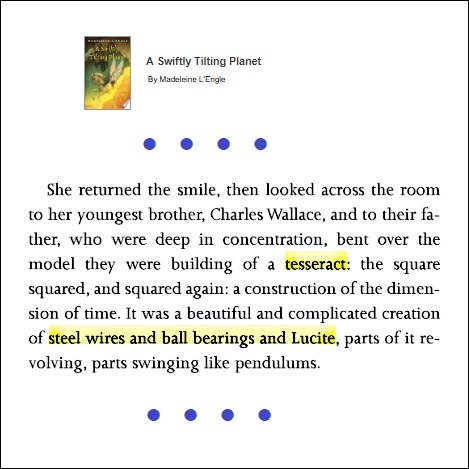"Right through hell there is a path . . . ." — Malcolm Lowry
This quotation is from a Log24 search for "1966."
That search was suggested by the now-streaming film
"MaXXXine" and by . . .

* Title of a book by Nanavira Thera.
"Right through hell there is a path . . . ." — Malcolm Lowry
This quotation is from a Log24 search for "1966."
That search was suggested by the now-streaming film
"MaXXXine" and by . . .

* Title of a book by Nanavira Thera.
In memory of a co-founder of Hollywood's "Magic Castle"
who reportedly died at 92 on Sunday . . .
From posts that were tagged "Blake Tour" on Sunday —

See also a Log24 search for "The Path."
Related material from a similar search
for "Nanavira Thera" —
"I am glad you have discovered that the situation is comical:
ever since studying Kummer I have been, with some difficulty,
refraining from making that remark."
— Nanavira Thera, Seeking the Path [Early Letters, 17 July 1958].
From Nanavira Thera, "Early Letters," in Seeking the Path —
"nine possibilities arising quite naturally" —

Compare and contrast with Hudson's parametrization of the
4×4 square by means of 0 and the 15 2-subsets of a 6-set —
A Buddhist view —
“Just fancy a scale model of Being
made out of string and cardboard.”
— Nanavira Thera, 1 October 1957,
on a model of Kummer’s Quartic Surface
mentioned by Eddington
A Christian view —

A formal view —
From a Log24 search for High Concept:
See also Galois Tesseract.
"Just fancy a scale model of Being
made out of string and cardboard."
— Nanavira Thera, 1 October 1957,
on a model of Kummer's Quartic Surface
mentioned by Eddington

"… a treatise on Kummer's quartic surface."
The "super-mathematician" Eddington did not see fit to mention
the title or the author of the treatise he discussed.
See Hudson + Kummer in this journal.
See also posts tagged Dirac and Geometry.
"For use of the Kummer surface in Buddhist metaphysics . . ."
is a phrase from a search in this journal for Nanavira.
See as well Buddhism in the previous post.

Related material — Posts tagged Dirac and Geometry.
For an example of what Eddington calls "an open mind,"
see the 1958 letters of Nanavira Thera.
(Among the "Early Letters" in Seeking the Path ).

Robin Williams and the Stages of Grief
A weblog post from Jan. 25, 2014 (click image to enlarge)—
Clues for a Mystery (Click links for more details)—
Clue 1: A June 11,* 2014, math death.
Clue 2: The answer is a surname.
Midrash for Will Hunting:
See Nanavira Thera at Wikipedia and space notes from September 2012.
* According to a (perhaps inaccurate) math department.
June 10, according to other sources cited by the department.
Denote the d-dimensional hypercube by
"… after coloring the sixty-four vertices of
alternately red and blue, we can say that
the sixteen pairs of opposite red vertices represent
the sixteen nodes of Kummer's surface, while
the sixteen pairs of opposite blue vertices
represent the sixteen tropes."
— From "Kummer's 166 ," section 12 of Coxeter's 1950
"Self-dual Configurations and Regular Graphs"
Just as the 4×4 square represents the 4-dimensional
hypercube
so the 4x4x4 cube represents the 6-dimensional
hypercube
For religious interpretations, see
Nanavira Thera (Indian) and
I Ching geometry (Chinese).
See also two professors in The New York Times
discussing images of the sacred in an op-ed piece
dated Sept. 26 (Yom Kippur).
In Like Flynn
From the Wall Street Journal site Friday evening—
| ESSAY September 21, 2012, 9:10 p.m. ET
Are We Really Getting Smarter? Americans’ IQ scores have risen steadily over the past century.
|
No, thank you. I prefer the ninth configuration as is—

Why? See Josefine Lyche’s art installation “Grids, you say?“
Her reference there to “High White Noon” is perhaps
related to the use of that phrase in this journal.
The phrase is from a 2010 novel by Don DeLillo.
See “Point Omega,” as well as Lyche’s “Omega Point,”
in this journal.
The Wall Street Journal author above, James R. Flynn (born in 1934),
“is famous for his discovery of the Flynn effect, the continued
year-after-year increase of IQ scores in all parts of the world.”
—Wikipedia
His son Eugene Victor Flynn is a mathematician, co-author
of the following chapter on the Kummer surface— 
For use of the Kummer surface in Buddhist metaphysics, see last night’s
post “Occupy Space (continued)” and the letters of Nanavira Thera from the
late 1950s at nanavira.blogspot.com.
These letters, together with Lyche’s use of the phrase “high white noon,”
suggest a further quotation—
You know that it would be untrue
You know that I would be a liar
If I was to say to you
Girl, we couldn’t get much higher
See also the Kummer surface at the web page Configurations and Squares.
"The word 'space' has, as you suggest, a large number of different meanings."
— Nanavira Thera in [Early Letters. 136] 10.xii.1958
From that same letter (links added to relevant Wikipedia articles)—
|
Space (ākāsa) is undoubtedly used in the Suttas
Your second letter seems to suggest that the space |
A simpler metaphysical system along the same lines—
|
The theory, he had explained, was that the persona
— The Gameplayers of Zan , |
"I am glad you have discovered that the situation is comical:
ever since studying Kummer I have been, with some difficulty,
refraining from making that remark."
— Nanavira Thera, [Early Letters, 131] 17.vii.1958
Powered by WordPress